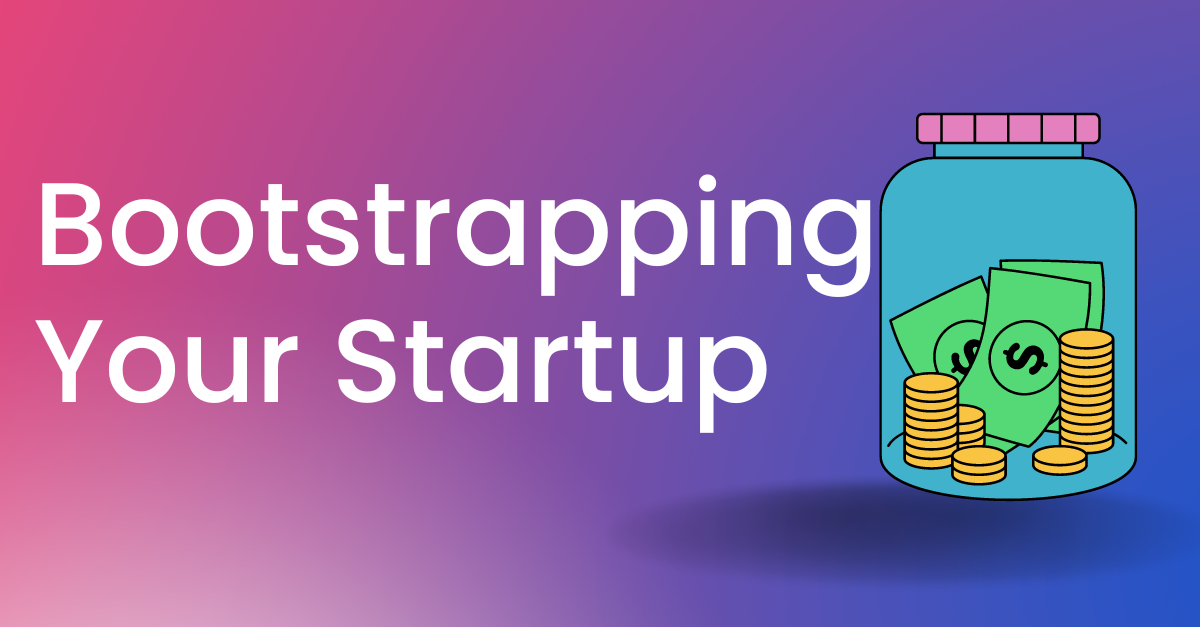In the challenging world of startups, securing funding can be daunting. However, bootstrapping offers a viable alternative for entrepreneurs looking to maintain control and independence over their ventures. Bootstrapping refers to self-funding a startup, relying on personal savings and revenue generated by the business to fuel its growth. This article will explore strategies for successfully bootstrapping your startup early, empowering you to forge ahead with confidence and financial stability in thestartup funding stages.
Building a Solid Foundation
To bootstrap your startup effectively, laying a solid startup funding foundation is crucial. This involves meticulous planning and financial management. Let’s delve into crucial aspects that contribute to a solid startup foundation.
- Streamlining Expenses
When bootstrapping, every dollar counts. It’s essential to scrutinize your expenses and eliminate unnecessary costs. Focus on the core aspects of your business and allocate resources wisely. This might involve cutting back on non-essential services or adopting cost-effective alternatives.
- Efficient Resource Allocation
As a bootstrapped startup, resource allocation becomes paramount. Maximize the utilization of available resources by implementing efficient processes and leveraging technology. Embrace cloud-based solutions, automation tools, and outsourcing options to optimize productivity and reduce overheads.
- Generating Revenue from Early Stages
To sustain your bootstrapped startup, generating revenue early on is critical. Let’s explore effective strategies to generate income during the initial stages of your venture.
- Minimum Viable Product (MVP)
Creating a minimum viable product enables you to launch swiftly and earn profits. Focus on creating a streamlined version of your product or service that meets the core needs of your target market. This enables you to validate your business idea while generating income to fuel further growth.
- Creative Pricing Models
Experimenting with innovative pricing models can give your bootstrapped startup an edge. Consider offering tiered pricing options, subscriptions, or product bundles to attract a broader customer base. Additionally, offering early bird discounts or limited-time promotions can entice customers while boosting sales.
Leveraging Networks and Partnerships
If you’re running a bootstrapped startup, it’s crucial to establish a strong network and cultivate strategic partnerships to achieve success. Let’s explore how you can leverage networks and collaborations to your advantage. There is a high chance of getting into the startup funding rounds with these networks and partnerships. So it’s essential to build your network as it may land your dream sponsorships and funding.
Engaging with Industry Communities
Active participation in relevant industry communities, both online and offline, can provide valuable insights and connections. Join industry forums, attend conferences, and engage in discussions to build relationships with like-minded entrepreneurs and potential customers. These connections can open doors to partnerships, mentorship, and funding opportunities and make an excellent platform for getting startup funding companies.
Strategic Collaborations
Collaborating with complementary businesses can help expand your reach and access new customer segments. Identify potential partners who offer synergistic products or services. You can maximize your exposure and create mutually beneficial relationships by combining resources and cross-promoting each other.
Smart Marketing on a Shoestring Budget
Effective marketing is crucial for any startup, but it’s essential when bootstrapping on a limited budget. Let’s explore cost-effective marketing strategies to drive growth and customer acquisition.
Content Marketing
Content marketing is a powerful tool for startups. Create high-quality, informative content that resonates with your target audience. Utilize blogging, social media, and guest posting to establish yourself as a thought leader and attract organic traffic to your website. This approach positions your startup as an authority in your industry while driving potential customers to your products or services.
Influencer Partnerships
Partnering with influencers relevant to your industry can amplify your reach without breaking the bank. Seek out influencers with engaged audiences who align with your brand values. Collaborate on content creation, product reviews, or giveaways to leverage their following and generate buzz around your startup.
Financial Management and Scaling
Effective financial management and scaling strategies become pivotal as your bootstrapped startup gains momentum. Let’s explore how to navigate these aspects of your business.
- Lean Financial Management
Continue to prioritize lean financial management even as your startup grows. Regularly review your expenses and identify areas where cost optimization is possible. Maintain a cash flow forecast to ensure you clearly understand your financial situation and make informed decisions.
- Controlled Growth and Scalability
While pursuing rapid growth is tempting, maintaining control over your startup’s trajectory is essential when bootstrapping. Aim for sustainable growth that aligns with your resources and revenue. Gradually expand your operations, scale your team, and enter new markets when correct.
Conclusion:
Bootstrapping your startup requires resourcefulness, discipline, and a strategic mindset. You can successfully navigate the early startup funding stages of self-funding by streamlining expenses, generating revenue early on, leveraging networks and partnerships, implementing cost-effective marketing, and practising effective financial management. Embrace the power of bootstrapping to foster independence, maintain control, and lay a solid foundation for your startup’s growth. Remember, with determination and the right strategies, and you can turn your vision into a thriving business without relying on external funding.

